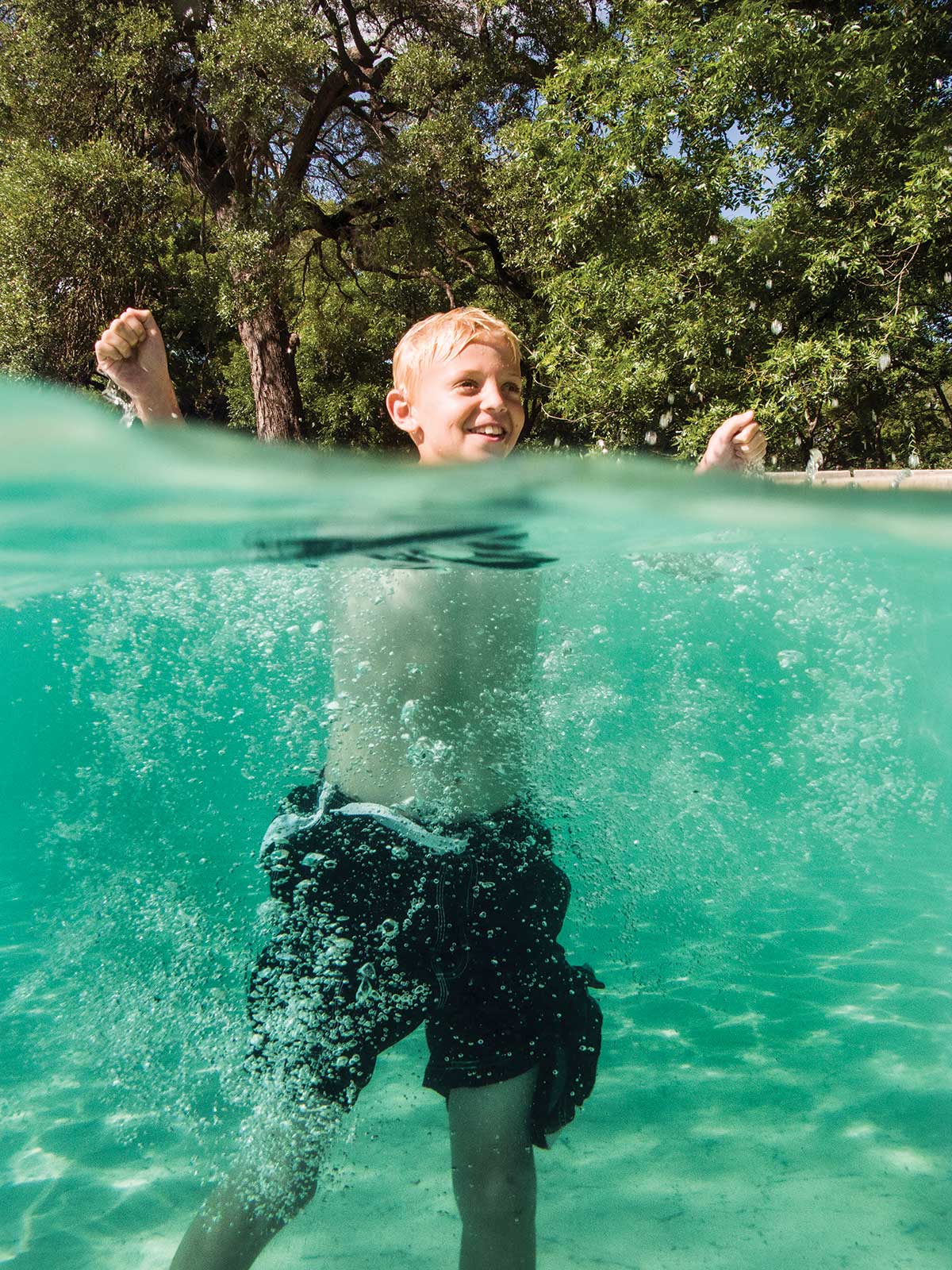Want to make a splash this summer? Skip the swimming pool and dive into something a little more wild. The state offers dozens of options for cool dipping to relieve a hot afternoon, from spring-fed swimming holes to sun-drenched surf. Everyone has their favorite, but the following five idyllic locations may help narrow your choice down to one of the more surprising summer travel spots for you and your family.
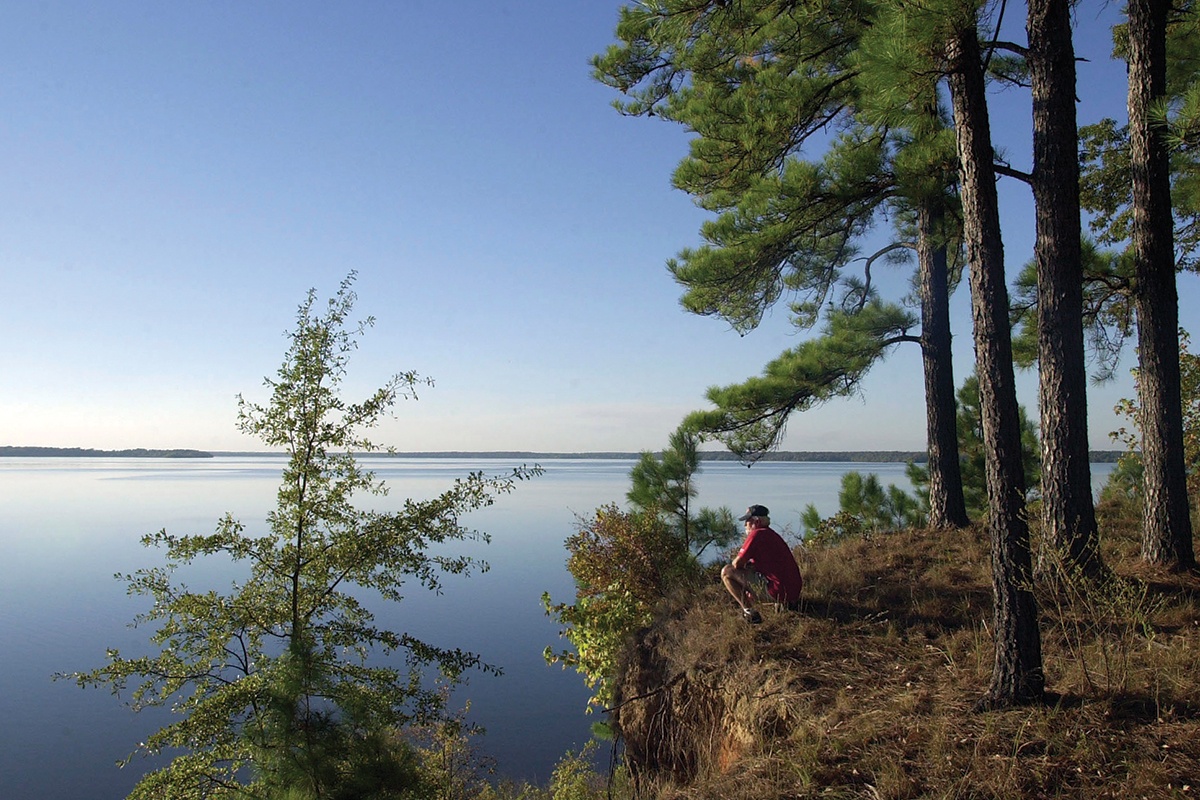
Campgrounds at Atlanta State Park sit high above the waterline.
Earl Nottingham | TPWD
Atlanta State Park
In far northeastern Texas, you’ll find Atlanta State Park, a weekend destination only 30 miles south of Texarkana. Atlanta State Park occupies the shoreline along a small corner of Wright Patman Lake, a 20,000-acre reservoir built along the Sulphur River. Park visitors enjoy campgrounds high above the waterline that feature recreational vehicle and tent sites, restrooms with showers, picnic areas and hiking trails. A mix of hardwood and pine forests make camping comfortable and cozy as soaring trees create a rooftop canopy far above your tent.
Green glens abound, and hiking trails are layered in soft pine duff. The undulating park road, hilly and winding, makes for great bicycling. The park’s forestry also provides an ideal location for spotting woodland birds. You might share a campsite with red-bellied woodpeckers or hear the song of the eastern bluebird, pleasant morning company before an afternoon of paddling a canoe (rentals are available at the park’s headquarters) or floating on your favorite inflatable.
The park’s swim beach slopes gently into the waters of Wright Patman Lake alongside a forest of woodland shade and makes for an easy, sand-bottom retreat on a warm afternoon. Orange buoys keep the swimming area free of motorboats and jet skis.
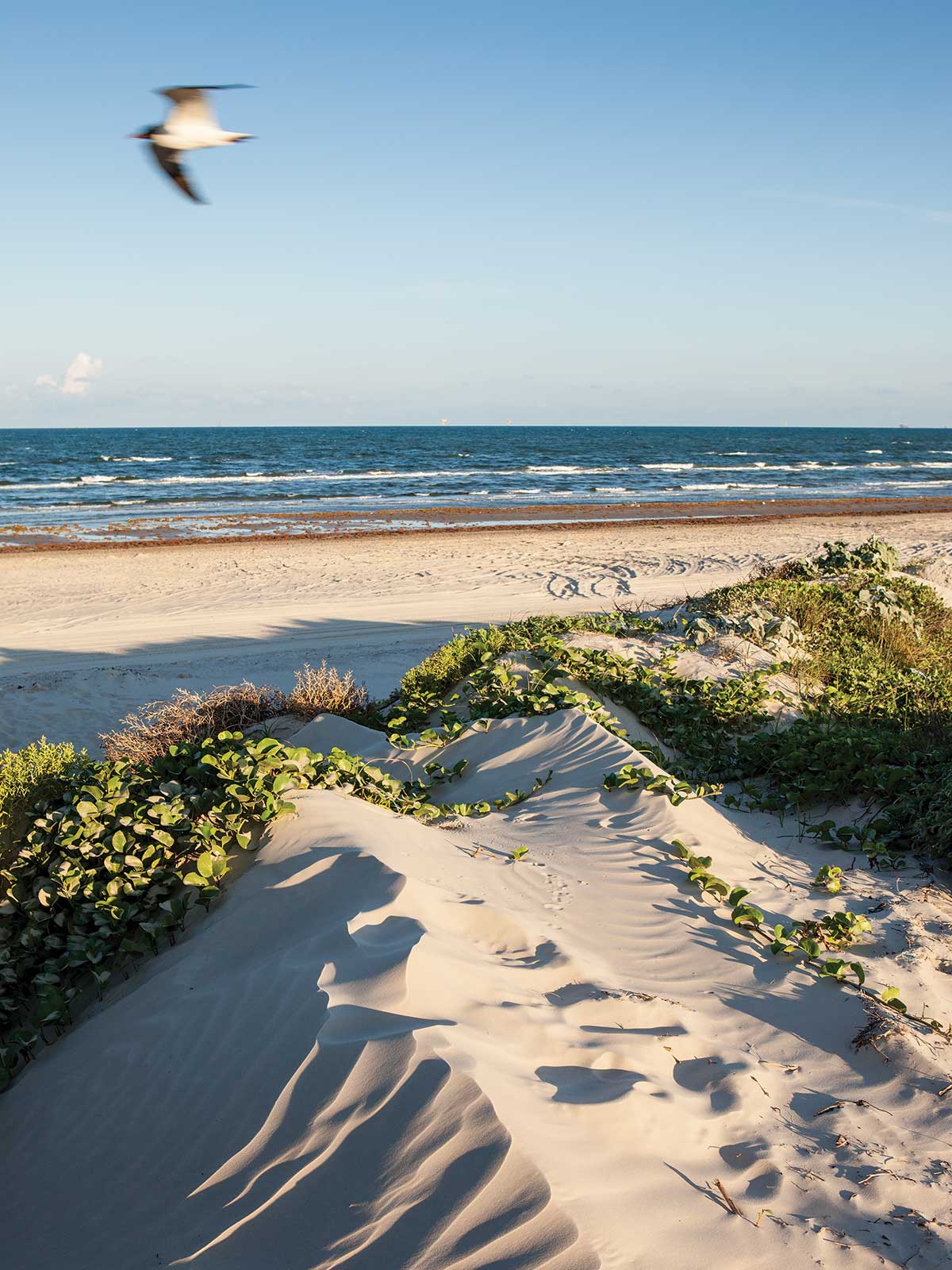
Mustang Island features a state park with 5 miles of beaches and its lone town of Port Aransas, a top coastal attraction.
Kenny Braun
Mustang Island
Farther south, along the state’s coastline, Texas beaches offer more than 300 miles of sand and surf, providing hundreds of opportunities to dip your toes in the waves. But Mustang Island is one location that keeps many Texans coming back to the coast every year. The island and its only town, laid-back Port Aransas, feature fun and affordable restaurants and taverns; reasonably priced campgrounds and rental cottages; and fishing, paddling and plenty of birding.
Beach access along the northern end of the island includes the I.B. Magee Beach Park, a five-minute drive from the Port Aransas ferry landing. This county park offers essentials such as RV hookups, a bathhouse and primitive camping.
On the southern end of the island, Mustang Island State Park includes 5 miles of traffic-free sand on the Gulf side and a small channel, called Fish Pass, for easy, kayak-friendly bay access. But the cheapest island overnight stay requires nothing more than a beach parking permit (available at convenience stores and beachside vendors). Public restrooms, cold-water showers and trashcans are stationed at various mile markers along the shoreline.
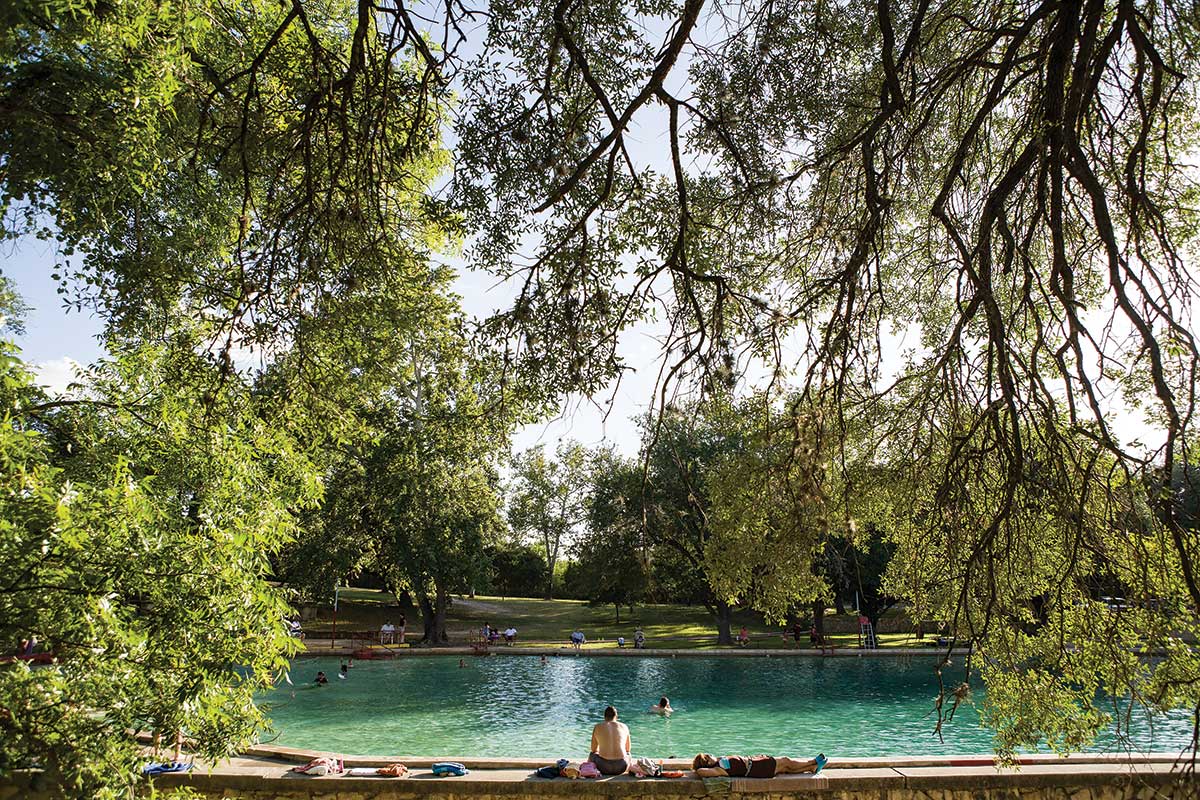
Fort Clark Springs, near the Kinney County town of Brackettville, features a 100-by-300-foot pool fed by Las Moras Springs, which rise under artesian pressure.
Kenny Braun
Fort Clark Springs
Westward and in the southwestern quadrant of the state, you’ll find Fort Clark Springs, established as a U.S. Army base in 1852 alongside Las Moras Creek. Fort Clark is located across U.S. 90 from the community of Brackettville. Now a family-style resort and retirement community, Fort Clark Springs offers visitors the third-largest spring-fed pool in the state, replenished constantly with fresh, underground spring water. Today’s concrete pool measures 100 by 300 feet and, due to a perpetual flow from the nearby Las Moras Springs, maintains a constant temperature of 68 degrees. The pool is large enough to accommodate a host of noisy splashers as well as napping sunbathers and, along with the resort’s amenities, makes an ideal family summer getaway.
Fort Clark began a transformation into a residential resort after military closure in 1946, eventually offering motel-style rooms, RV hookups and a golf course. The surviving structures of the original military post include officers quarters (many of them private residences now), a guardhouse, barracks (now the motel), headquarters, a hospital, mess halls and a museum.
Brackettville provides several good restaurants, a small grocery store, convenience stores, a hardware store and, because it’s the Kinney County seat, a 100-plus-year-old courthouse.
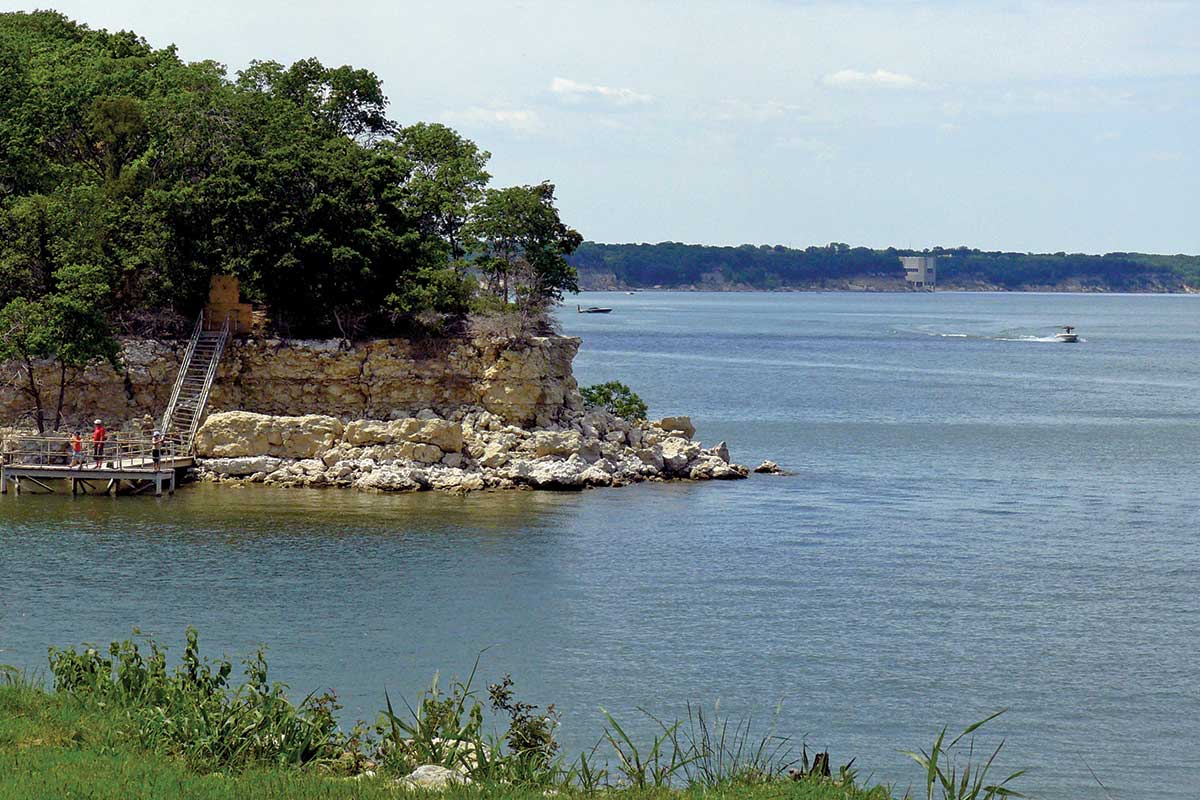
Eisenhower State Park is on the southern shore of Lake Texoma, which sits on the Texas-Oklahoma border.
Bryan Frazier | TPWD
Eisenhower State Park
If you’re headed to far north Texas, enjoy a retreat at Eisenhower State Park along the banks of Lake Texoma, one of the largest reservoirs in the state. The park offers campsites with water; electricity; restrooms and showers; and dense stands of oak, elm, cedar and dogwood along picturesque bluffs above the lake.
The park’s swim beach, located in a secluded cove below a rugged cliff known as Elm Point, may be the park’s finest amenity. This sandy, soft-bottomed spot features a graduated water depth, a pebble beach perfect for sunbathing, cozy bluffs sheltering each side, and markers across the cove’s deep-water entrance to dis-courage motorized vessels from coming near shore. Plan an all-day visit and bring a picnic, towels, inflatables and water-resistant sunscreen. The cove’s calm waters will occupy your entire day.
Then, spend at least one afternoon taking in the Denison Dam, the 15,350-foot-long earth embankment that makes Lake Texoma possible. Completed in 1944, the U.S. Army Corps of Engineers project was once the largest rolled earth-fill dam in the world, holding back nearly 4.5 million acre-feet of water and producing around 250,000 megawatts of electricity each year. Admire the dam’s architecture from viewing points above the riprap abutments and from a concrete overlook above the sluiceway.
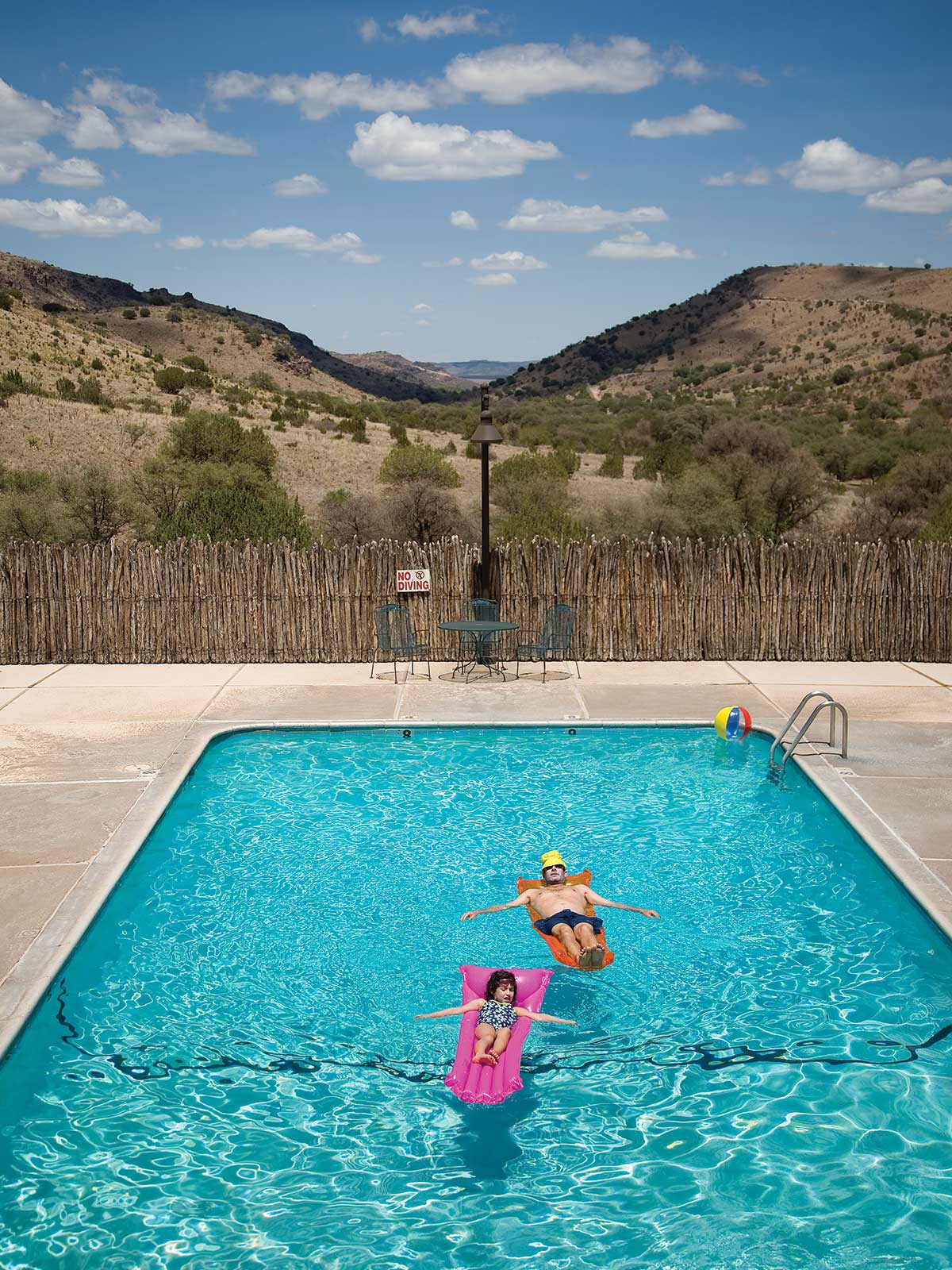
The pool at Indian Lodge is a mile-high oasis in the Davis Mountains. The lodge was built in the 1930s by Civilian Conservation Corps workers.
E. Dan Klepper
Davis Mountains State Park
If your travels take you to far West Texas, add Davis Mountains State Park to your itinerary. Make reservations at Indian Lodge, the historic inn tucked into the park’s mountainside, where you can take a midsummer dip in the mile-high swimming pool. The pool, located on a sun-bleached patio, provides a perfect way to relax after a day of sightseeing or hiking the surrounding mountain trails.
Whether you stay at Indian Lodge or not, it’s worth a visit. The lodge is an architectural icon of the state park system, designed in the Pueblo Revival style of the early 20th century and built in the 1930s by Civilian Conservation Corps workers. Its hand-hewn woodwork, native rock accents, whitewashed stucco and adobe walls were constructed completely from local materials. You’ll find hand-assembled stone chimneys, parapets and terraced wall foundations as well as roof timber beams (called vigas) harvested from the surrounding higher elevations and featured in the lodge’s lobby ceiling. Stalks of river cane from the Rio Grande (called latillas) are laid diagonally to fill the spaces between the vigas. The adobe bricks that form the majority of the original lodge construction were made and cured on-site. Plan a weekend getaway in one of the lodge’s comfortable 39 rooms and enjoy the benefits of the mountain air while swimming lazy laps in the pool.
With so many great summer swim vacations to choose from in Texas, the hard part is making a choice. But once you get there, the next step is easy: Just hold your breath and jump in!
